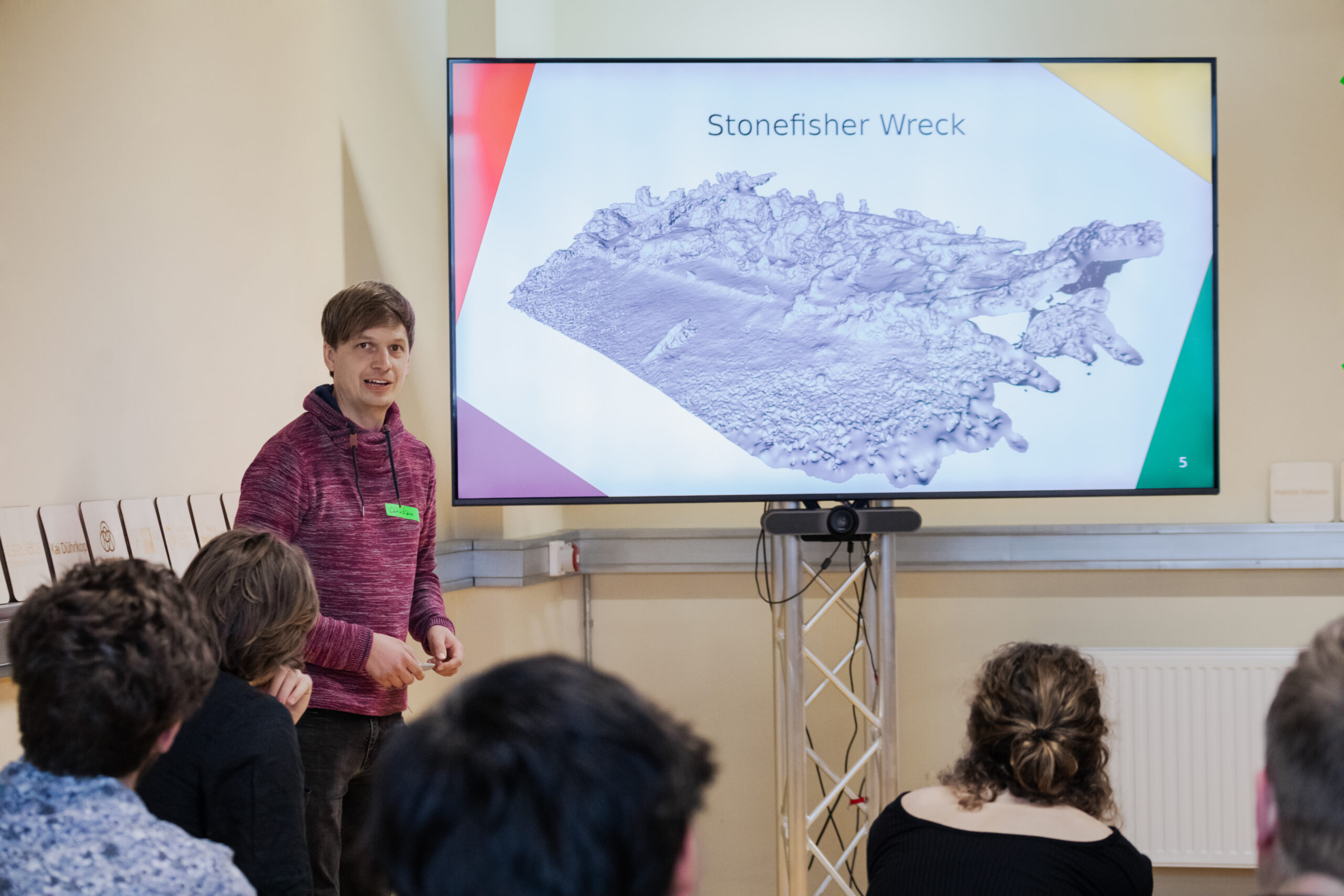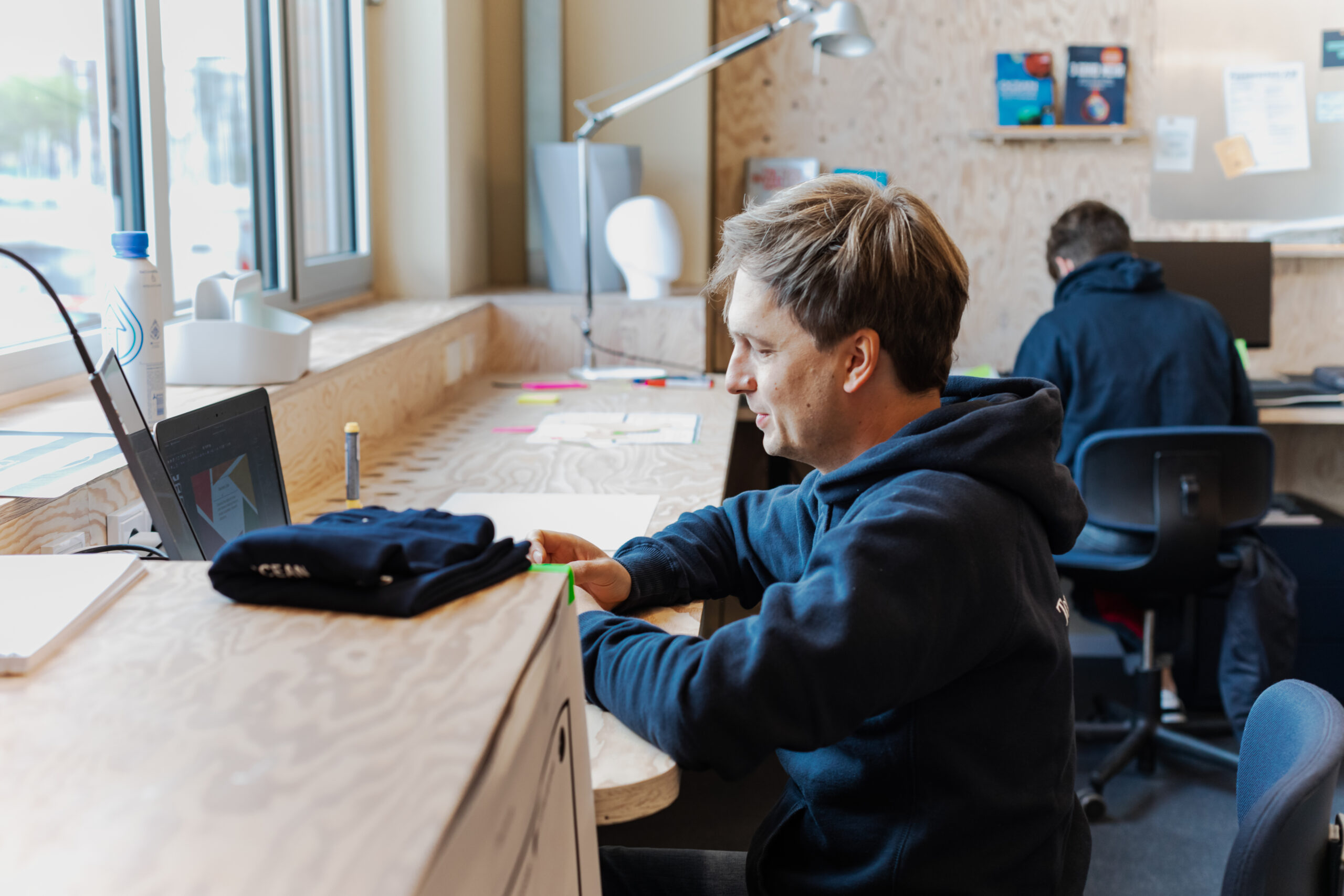Challenge – Smart Wrecks
During the hackathon, Christian got to the bottom of old shipwrecks with a smart and digital idea. This is an important topic for the North Sea and the East Sea, and thus also for the Kiel region, because old wrecks provide a lot of information about seafaring in earlier times and many potentials for coastal and marine protection.
Nowadays, underwater archaeologists and biologists are assisted by robots in the exploration of the wrecks. For obstacle and collision avoidance by the robots, acoustic sonars can be used to scan the environment using underwater sound waves. The problem with this approach, however, is that the sonar’s measurement data is heavily noisy due to particles in the water and reflected echoes. Direct use of the data is therefore not possible.
Christian has taken on this challenge to develop a solution to the problem using a new and innovative approach. He has received support from mentor Tim from MeltingPlot. While Christian brings expertise in digital signal processing as co-founder of sonoware, Tim complements the team skills with his hacking abilities and a knack for thinking his way into complex problems. The Challenge – Smart Wrecks Detectors started with this interdisciplinary lineup.


GEOMAR‘s autonomous underwater vehicles (AUVs) provided a practical example and the data source for the challenge problem. Due to the low visibility especially in the Baltic Sea, there are difficulties for autonomous navigation in practical use. Initial attempts at a solution, using a lightweight forward-looking sonar, have so far resulted in poor quality data.
Christian saw the solution to the problem in data enhancement of the small sonar using digital signal processing methods to enable automatic collision avoidance by the AUVs. To achieve this goal, however, Team Smart Wrecks first had to face some challenges:
- Data extraction of sonar data from binary file format
- Improving sonar data using the digital signal processing approaches.
- Visualization of raw and processed sonar data
With the support of Tim as well as the AuV team around Marcel Rothenbeck, Christian succeeded during the hackathon in developing a solution approach in the form of modular software for real-time signal enhancement and processing of sonar signals for autonomous underwater vehicles. For the conception of a business model, discussions were also held with potential customers to learn more about potential requirements, development costs and license fees.
We are excited about Christian’s idea implementation and see a lot of potential in his solution approach: improved navigation of autonomous underwater vehicles can not only facilitate the exploration of old shipwrecks. For example, the detection of munitions waste in the sea could benefit from the progress of signal enhancement or, in the development of new offshore wind farms, allow for an acceleration in the surveying of new expansion areas.
Copyright: Nicole Riederer Lightnic Photography
